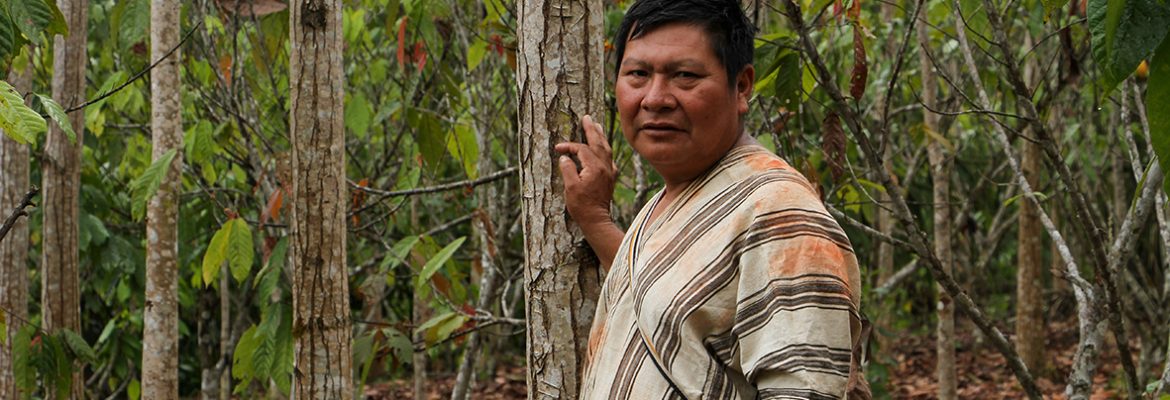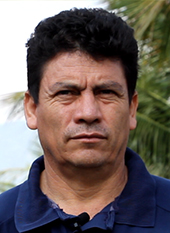

Write: Edber Bendezú, CEDIA field coordinator, and Ricardo Risco, southern regional director of CEDIA.
The Apurímac River Valley (VRA) has the Ayacucho region on its left bank and Cusco on the right. In this area we can identify three types of populations. One of them is made up of the original indigenous peoples, recognized under the organizational form of native communities. This population is dedicated to carrying out activities in harmony with the environment and conserves the biodiversity and fragile ecosystems of high hills, which generate the water resource.
In turn, these indigenous peoples are reluctant to produce the coca leaf, despite being the most forgotten group in the region because they do not have access to basic rights, efficiently, by the State. In addition, by tradition, they cultivate for their survival a diversity of plant and forest species of high commercial and cultural value, which they complement with livestock activity.
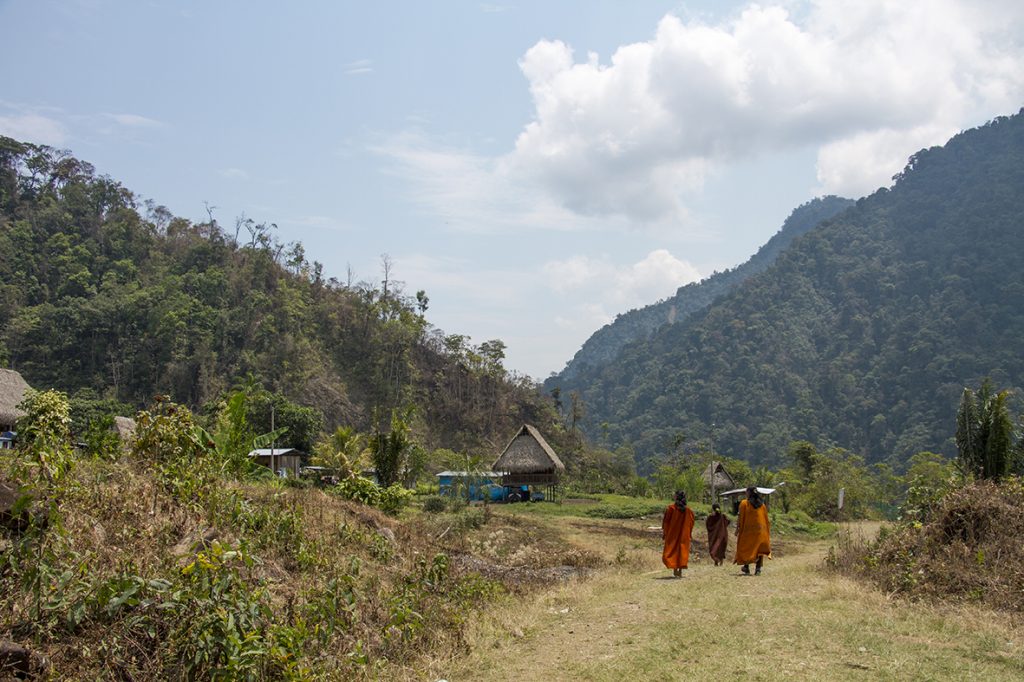
Another population is made up of migrant settlers, dedicated to the cultivation of coca and other commercial products. This population develops an intensive agriculture, of high environmental and ecosystem cost; By contaminating water sources with chemical residues, they generate high soil erosion, excessively use pesticides in the cultivation process, among other actions that are not very friendly to the environment. Thus, they prey on natural resources, in an effort to make money.
Currently, a difficult environment is observed for this group due to the emergence of the coronavirus pandemic, COVID-19. This situation decreed by the current government has involved quarantine measures, immobilization of people and cargo transport.
What's more, because the borders are closed and there is no way to move the merchandise, there are also no buyers. This has led to a sharp drop in the price of coca leaf of S /. 190.00 soles per arroba, at only S / 50.00 soles, with a tendency to continue decreasing, a situation caused by lower demand and that, in some way, will discourage crop production.
Finally, another population is the migrant, considered as el mestizo-urban sociocultural front, which is settled in urban areas, as well as in expansion zones. Its inhabitants are characterized by properly urban activities (commercial, provision of various services and transformation). They also have cultural patterns typical of cities. They are the most dynamic population, in economic and demographic terms.
Since 2008, the Center for the Development of the Amazonian Indigenous (CEDIA) in alliance with the Organization Asháninka and Machiguenga de Río Apurímac (OARA) and with the support of the cooperating entity Nouvelle Planète (New Planet), have been making efforts to achieve the legal physical sanitation of the indigenous territories of the VRA. Taking into account that a titled territory is synonymous with forest conservation, the title helps to lay the foundations for sustainable development, based on the management of natural resources and the food sovereignty of its inhabitants. The latter is a component of the OARA Capacity Building project for the Implementation of the Strategic Plan 2017 - 2026, called FOCAMARA.
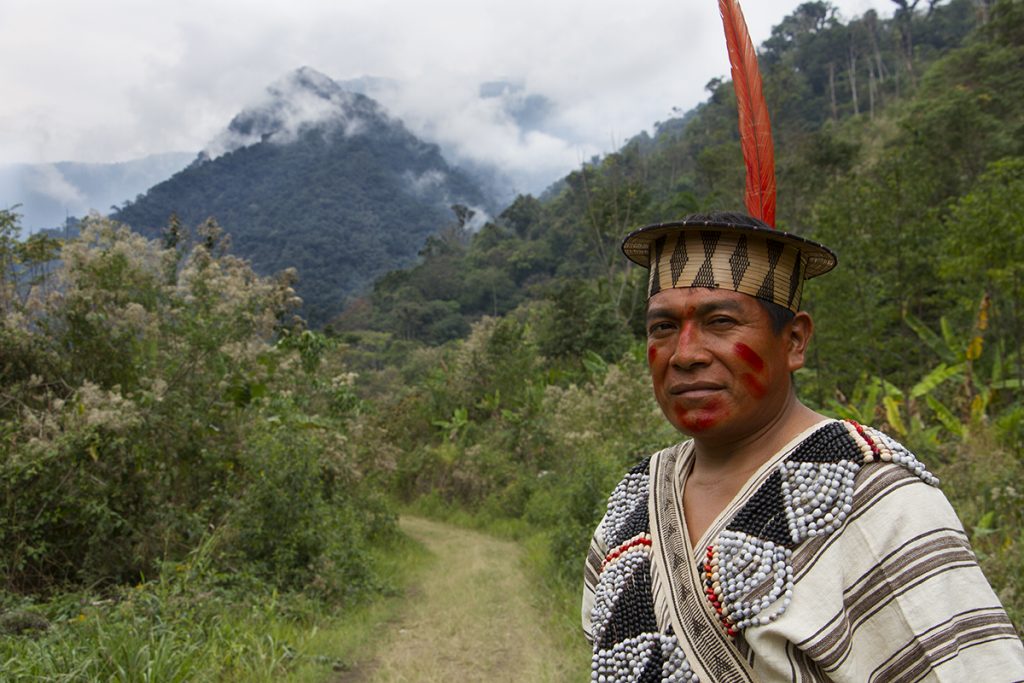
To better understand, we draw on the background of their cultural traditions about their feeding process. The Asháninka and Machiguenga are populations dedicated exclusively to hunting, fishing and gathering fruits; However, through the intercultural relationship established over time with the settlers, they have been incorporated into other economic activities, related to commercial agriculture such as coffee, cocoa, achiote, and in the livestock activity of small animals, especially in raising chickens.
We must highlight something that these native peoples have known how to maintain over time: the permanence of native species in their integral farms. However, these practices have been weakened by the influence of the market and the acquisition of some customs and habits of foreign people. These changes have generated that, especially the child population, is going through a situation of chronic malnutrition and anemia.
For this reason, the FOCAMARA project has been promoting the rescue of ancestral crops in a diversified way, through the establishment of integral farms, with the participation of indigenous women. In this way, they have been recovering the traditional way of growing, in the same space, diversity of plant species, whose use goes from the roots, to the fruits and seeds. This activity has been complemented with small family ponds for raising tropical fish and mollusks, to provide protein of animal origin to their diet.
In the process of adaptation to the new rhythm of life imposed by society, where money is a priority, they have seen the need to produce commercial crops on their farms such as cocoa, coffee, annatto and others. However, noticing that their production is seasonal, with unstable and low prices, they have had to recover practices that allow them to better cope with this situation.
It is through the FOCAMARA project that the forestry component has been incorporated; that is, to introduce timber species such as cedar, screw and pashaco into commercial crops, establishing agroforestry systems to increase their economic income in the medium and long term.
The presence of the coronavirus, COVID-19 has been able to reveal that indigenous practices, simple and unknown to many, are a viable and sustainable alternative that, in full quarantine, the indigenous population finds, without any problem, the provision of necessary food for his family, keeping agroforestry species in reserve, which later will allow him to better face life's challenges.
A marked difference is observed with the neighboring migrant populations, who are in distress to access basic necessities, which have been scarce and overvalued in local markets.
The man, Virgilio Pizarro Curi, president of the Organization Asháninka y Machiguenga de Río Apurímac (OARA), points out: “in the past we lived from fishing, hunting and gathering fruits. We used medicinal plants to treat different diseases, but nowadays when we get sick the doctors force us to go to a health center and they are inducing us to life with money; For this reason, we have been forced to plant cocoa, coffee, forest trees, to obtain these economic resources and cover basic needs; but we have not neglected our integral farms. It is part of our culture, we plant for our own consumption and we are prepared for survival, since we have food: we do not depend on the market. The indigenous man lives with Mother Earth and the power of nature: they provide us with our market, our medicine, the hardware store and allow us to cover all our needs ”.
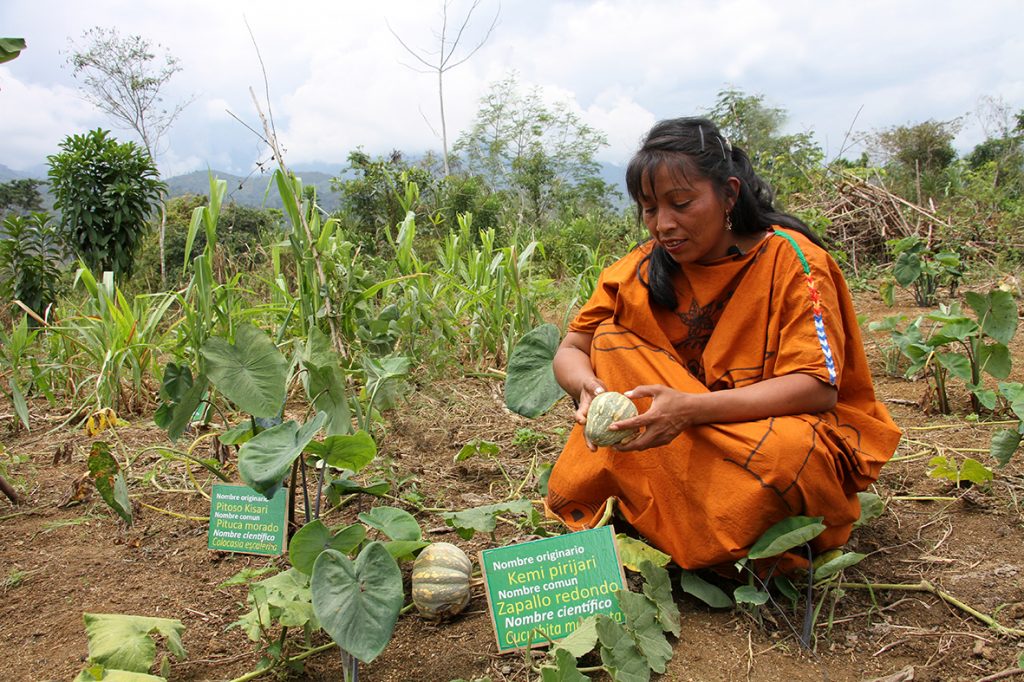
The lady, Karina Cipriano Damián, a nursing technician and promoter of integral farms, reiterates: “that the native peoples used to eat natural products from hunting, fishing and gathering fruits, using medicinal plants to cure their illnesses. We did not know food or commercial drugs or money. It was only during the colonization period that many indigenous people were taken as slaves, it is where they learn and get to know Western life that is lived all with money, strongly influencing our food culture, clothing, the use of medicines, among others, violating our customs, our worldview. of life. Because of that need, we began to grow commercial products such as cocoa, coffee, and trees. Even many of the indigenous women, out of need for money, are today day laborers harvesting coca leaves; However, this type of difficult situations such as the pandemic makes us think, even more, to indigenous women, that we are the ones who run these farms, prepare the food and who we have been promoting, with the support of the NGO CEDIA, to rescue and revalue some vegetable sources that we had already stopped cultivating. Whole farms are very important in our diet, especially for our children. As promoter, it is my duty to promote, with my brothers and sisters, greater interest, rescuing this cultural richness, where food is the fundamental basis for our survival ”.
So, in a privileged country like Peru, we can conclude by pointing out that food sovereignty is going to be consolidated as we diversify the sources of our local food resources, making them varied and affordable. In this way we will improve the nutritional level of our population, with less monetary dependence, also allowing us to have surplus production for the market, which will allow us to cover other needs.

